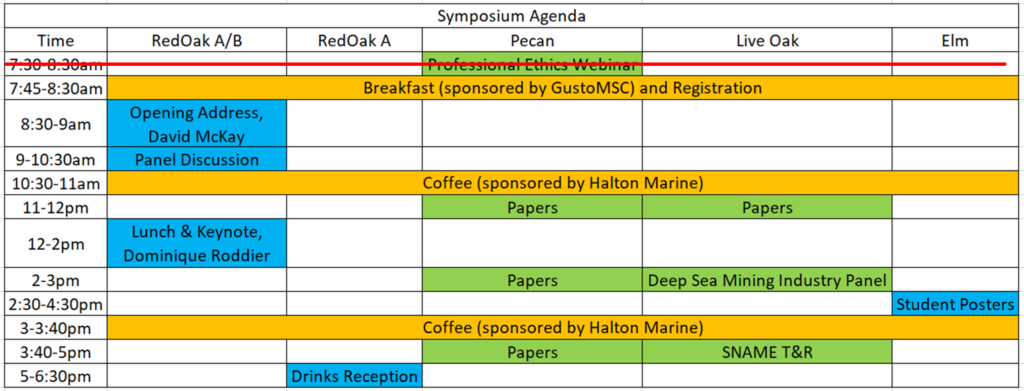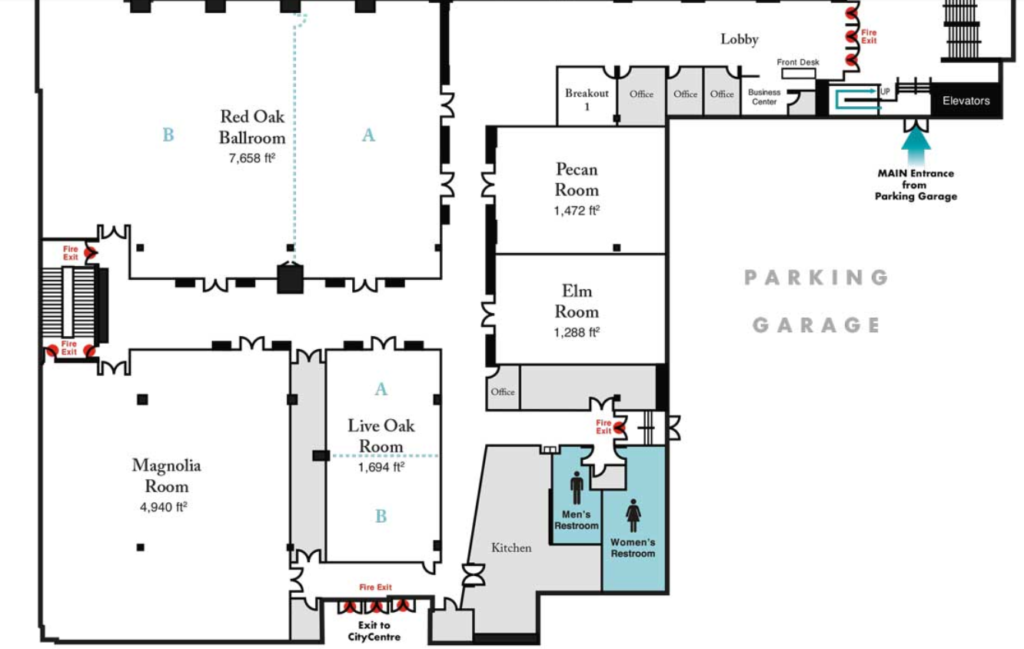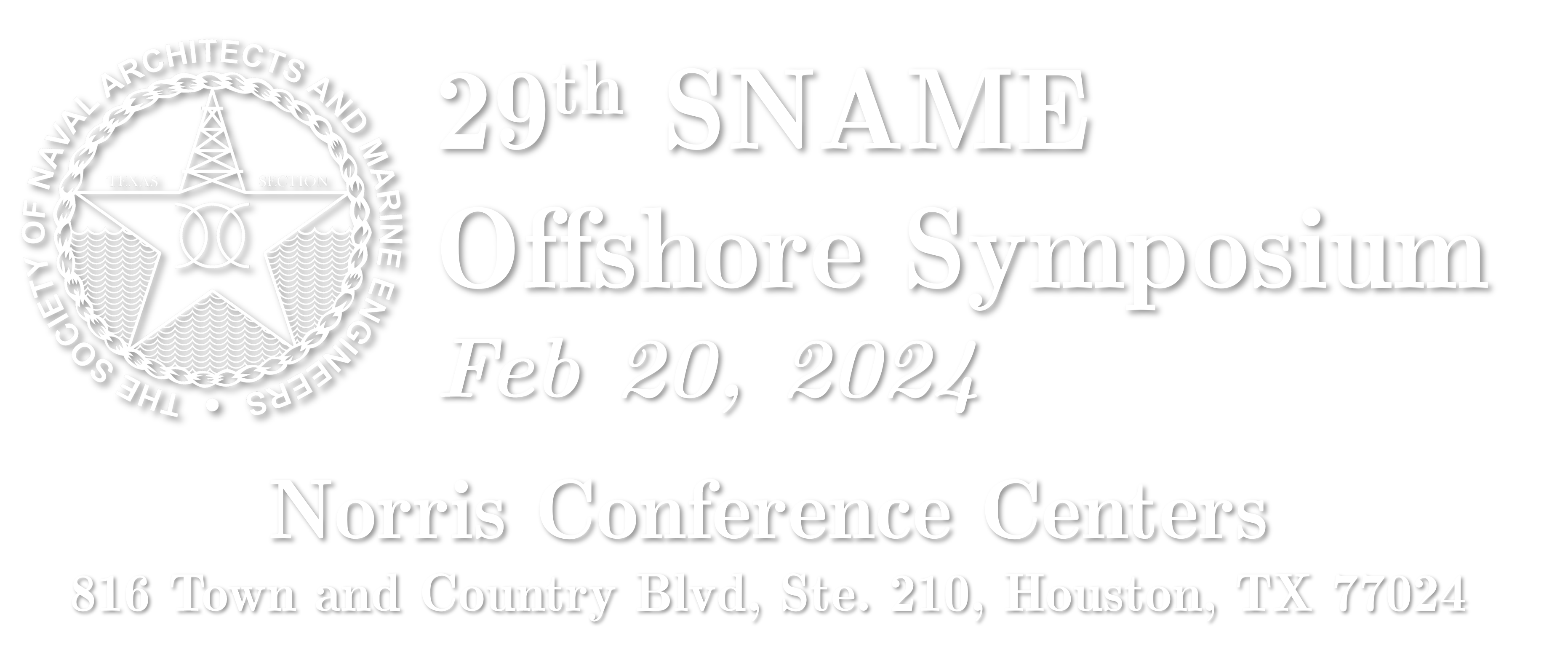Welcome to the symposium!
The schedule of the day’s events is shown below. The symposium starts at 8:30am with the opening address. The registration opens at 7:45am and we also have a mini breakfast. Unfortunately, we have had to cancel the professional ethics webinar.

Details about the plenary sessions, panels and SNAME T&R sessions are given on the home page. The list of papers is given below:
| Live Oak Morning Session (11am – 12pm) |
| On the Edge: What Happens When the Achieved Preload Reaction Is Exceeded |
| An Innovative Feeder Concept of the Wind Turbine Installation Vessel with Barge Lifting Module |
| Liquid Cargo for Vibration Absorber Applications by Double Pendulum Modeling |
| Pecan Morning Session (11am – 12pm) |
| Emission Reduction, Safety, and System Redundancy: Battery in Offshore Wind Service Operation Vessels (SOV) and Offshore Oil and Gas Vessels |
| Technology for OSV Vessels in Ice Conditions |
| CFD Simulation of the OC6 Phase IV Floating Offshore Wind Turbine Platform |
| Pecan Afternoon Session 1 (2pm – 3pm) |
| Prediction of Flat-to-Slant Fracture Transition in Ductile Failure Mechanism Under Different Loading Modes |
| Modeling Drop Weight Tear Test Procedure for X65 Q&T Pipeline Steel Including Reverse Fracture |
| Corrosion Sensors Used for Structural Health Monitoring of Oil and Natural Gas Infrastructure |
| Pecan Afternoon Session 2 (3:40pm – 5pm) |
| Inverse Estimation of Ocean Waves Using Artificial Neural Networks Based on Motions of an FPSO and Environmental Variables |
| Guidance on the Verification and Validation of Digital Twins |
| Real-Time Enhancement of Visual Clarity in Turbid Waters for Commercial Divers and ROVs |
| Computational methods for the design and prediction of performance of marine ducted turbines |
The arrangement of the various rooms at the Norris Conference center is shown below.

